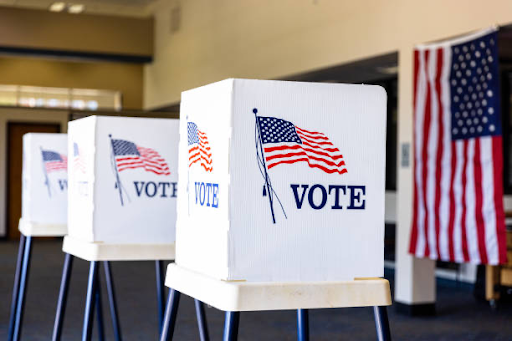Last April, President Biden signed H.R.815, a federal funding bill meant to supply funds to various federal agencies and send aid to Israel, Ukraine, and the “Indo-Pacific region,” which means sending money to Taiwan to help fend off a Chinese invasion. Normally this bill would have been a regular funding bill, except there was one thing that put this piece of legislation in the public eye: Division H of the aforementioned bill.
The “Protecting Americans from Foreign Adversary Controlled Applications Act,” which states that TikTok’s parent company, Byte Dance, has 270 to sell or divest all U.S. interests to American companies or the app faces a total national ban. This deadline falls on Jan. 19.
How did something like this even get added to a funding bill?
It starts with learning about the legislative process. Any bill can be written and put on the “floor,” or put forth for consideration before the entire chamber. In this case, it was the House of Representatives. Funding bills can only originate from the House. Once the bill is put on the floor, it is sent to a committee. If it passes the committee, it heads to the floor for approval. Once it reaches the floor again, the entire chamber can debate this bill to sway opinions. But that’s not all. The important part of this step is that anyone can place an amendment, or change, to said bill. This is how Division H was added to H.R.815. The amendment will be debated on the floor and then a vote will happen to determine if it will be added to the bill permanently. Once it is added to the bill, it is now part of it and cannot be removed unless by another amendment.
But why would this amendment be added in the first place?
The month before H.R.815 hit the floor, H.R.7521 was placed on the floor by Rep. Mike Gallagher. It was identical to Division H, although it didn’t have enough force to get to the desk of the president. It passed the Republican-controlled House, but once it reached the Democrat-controlled Senate, it lost all momentum. It never made it past this important step. The bill was dead.
Then how did it pass when it was attached to HR.815?
It is a very common tactic for legislators to place amendments on bills that are guaranteed to pass, like funding bills. It is very unlikely that the president will risk a government shutdown and veto an entire funding bill over one measly amendment. This is actually how most laws are made. Rep. Gallagher placed a nearly identical copy of H.R.7521 on H.R.815. This meant it was guaranteed to be signed into law as it was attached to a funding bill.
So will TikTok be banned?
On Dec. 6, the D. C. Court of Appeals upheld the law, which means the court supports the requirement of a “sale-or-ban” doctrine. TikTok and its parent company, Bytedance, are most likely going to appeal the decision to the highest court in the land: the Supreme Court. Whether or not the Supreme Court will uphold or overturn the law remains to be seen. This is, of course, only if the court decides to take the case. Whether or not the popular app will be banned hangs in the balance, as only time will tell.
This article was meant to be the definitive FAQ on this particular issue. If any questions remain unanswered, please email me at [email protected] and I would be happy to answer them. If you’d like to read the full text, you can head to congress.gov and search “H.R.815.” I will warn you, it isn’t a page-turner.
Want to learn more about the legislative process? senate.gov and house.gov are great resources! As is the National Constitution Center, where the full Constitution can be found, along with helpful interpretations and a whole bunch of other cool stuff.



























